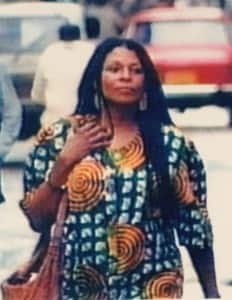By Katerina Svoronos, Summer 2023 Power in Place Collaborator
Image from: New Jersey State Police
Grassroots movements have been an essential part of American history for a long time. To this day, people will come together with a common goal in order to enact change. The difference between a grassroots movement in comparison to a regular social movement is that they use bottom up efforts starting at a localized level to gather initial support rather than top down effots. Most regular social movements try to gain traction by working at a national level. Grassroots movements have been increasingly used by social justice movements, as they usually do not have a lot of funding, but instead rely on the power of human motivation for their activism. The civil rights movements of the 1950s and 1960s had a lot of grassroots activism involved because it was important to attack the issue from all angles. Assata Shakur was a big part of those movements.
In today’s day and age, when people hear the name Assata Shakur, they often feel conflicted. On one hand, she is a hero to many for the hard work and perseverance she put in during the civil rights movements. On the other hand, she is on the FBI’s Most Wanted Terrorists list, which is quite daunting. Despite this, I argue that she is one of the most influential women of the past 100 years and that she should be seen as an inspiration rather than be villainized.
Assata Shakur, a black woman, grew up in the South during the Jim Crow era, an extremely difficult time period for people of color. During her adolescence, she faced a lot of racism both through macro and microaggressions. It shaped her in a way that was irreversible. Her experiences made her become interested in civil rights. As she got older she began to discover her passion for not only the civil rights movement but the movements and work that came after. Shakur joined the Black Liberation Army, in the hope to garner more attention for the common goal of equal rights. She considered herself a radical black feminist, which meant that she was willing to do anything for the liberation of black people and women. There was a lot of intersectionality between these two movements and Shakur helped to build a bridge between the two. While some of her methods were unconventional and dangerous, such as robbing banks, she also spent a lot of hours behind closed doors educating her fellow peers and spreading the message locally. Shakur started working for the BLA throughout New York, handing out pamphlets and spreading information through rallies. Her grassroots movement was of utmost importance to both the feminist movement and the aftermath of the civil rights movement, as both struggles were not over.
Unfortunately Shakur’s life took quite the turn when she was involved in an incident of police brutality. While pulled over for a very minor issue, a police officer became suspicious of her and her unarmed friends. The officer shot and killed one of Shakur’s friends, and alongside that Shakur became injured. Shakur shot back in self defense, yet she was convicted of a multitude of crimes. There is much evidence that shows how her trial was unjust, but in the end she was sentenced to life in prison anyways. Eventually, Shakur escaped and now lives in Cuba, where she was granted political asylum. However, the FBI continues to go after her, despite the fact that there is evidence that she was given an unfair trial. Today Shakur is still advocating for herself and for the movements she believes in.
What sort of viewpoint should we see Assata Shakur from now? I would argue that she is an inspiration in many ways. While there is no condoning some of the violent methods that she used, her tireless efforts to further the movements she believed in should encourage us all to never give up. Grassroots movements helped to bring about some of the most important changes in this country, and racialized profiling and injustice are the cause for Shakur’s escape. While the FBI is still pursuing her case, in today’s modern society,we should be able to recognize that the justice system failed her again and again. Shakur’s involvement in the civil rights grassroots movement did bring about a lot of positive change, and she showed us the potential impacts that advocating at a local level can have on society.
References
[1] Adewunmi, Bin. “Assata Shakur: from civil rights activist to FBI’s most-wanted.” The Guardian. July 13, 2014. https://www.theguardian.com/books/2014/jul/13/assata-shakur-civil-rights-activist-fbi-most-want ed
[2] Longley, Robert. “What is a Grassroots Movement? Definition and Examples.” ThoughtCo. July 29, 2022. https://www.thoughtco.com/grassroots-movement-definition-and-examples-5085222
Katerina Svoronos is a rising sophomore at Haverford College. She is an intended political science major with a concentration in international relations and law. She hopes to be a journalist one day and would love to work for the New York Times. In her free time she loves watching movies, hanging out with family and friends, and exploring new places.


